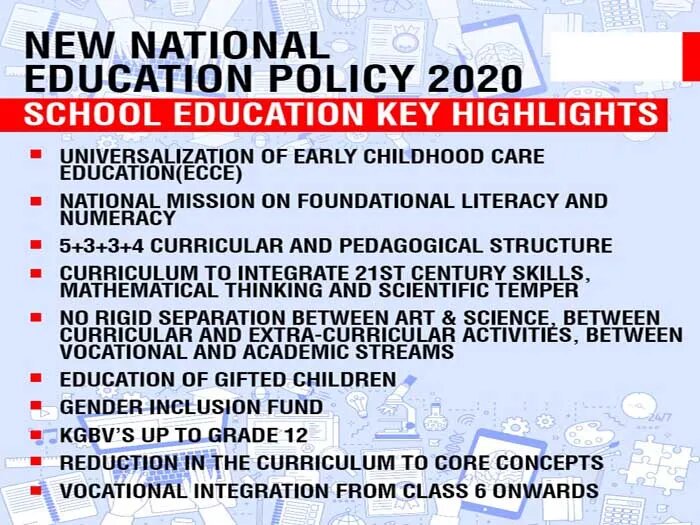Governance
Three Language Formula and Autonomy in Language Policy
- 07 Aug 2020
- 7 min read
This article is based on Language of unity: on rejection of the three-language formula which was published in The Hindu on 07/08/2020. This article deals with the issue of non-compliance of states like Tamil Nadu to the three language formula and discusses alternative options to the three language formula such as the language policy adopted in Tamil Nadu.
Recently Chief Minister of Tamil Nadu rejected the three-language formula advocated in the National Education Policy (NEP 2020).
The two-language policy in Tamil Nadu was implemented decades ago after a historic agitation against the imposition of Hindi, it still remains non-negotiable for almost the entire political class.
Opposition from the State had forced the Centre to amend the draft NEP in 2019 and withdraw a proposal to teach Hindi as a third language in schools in non-Hindi speaking States.
Yet in the NEP 2020 it was decided to push for the three-language formula, to promote multilingualism and national unity. It has restarted the debate over suitability of three language formulas all over India.
Background
- The three languages referred to are Hindi, English and the regional language of the respective States.
- Though the teaching of Hindi across the country was part of a long-standing system, it was crystallised into a policy in an official document only in the National Policy on Education, 1968.
- This document said regional languages were already in use as the media of education in the primary and secondary stages.
Three-Language Formula (Kothari Commision 1968)
- First language: It will be the mother tongue or regional language.
- Second language: In Hindi speaking states, it will be other modern Indian languages or English. In non-Hindi speaking states, it will be Hindi or English.
- Third Language: In Hindi speaking states, it will be English or a modern Indian language. In the non-Hindi speaking state, it will be English or a modern Indian language.
Need for Three-Language Formula
- The Kothari Committee’s report observes that learning languages is an important part of a child’s cognitive development.
- The primary aim is to promote multilingualism and national harmony.
- Bridging the language gap: At the secondary stage, State governments were to adopt the three-language formula.
- It included the study of a modern Indian language, preferably one of the southern languages, apart from Hindi and English in the Hindi-speaking States.
- In the ‘non-Hindi speaking States’, Hindi should be studied along with the regional language and English.
Issue in Implementation
- The states in the hindi belt (such as in Uttar Pradesh and Bihar) could not promote learning of south Indian languages under a three language formula.
- The states like Tamil Nadu, Puducherry and Tripura were not ready to teach Hindi in their school curriculum. Instead they demanded autonomy of this issue.
Issue of Language and Identity
- In India most of the states have been formed on linguistic basis.
- Conflicts over identity especially over languages tend to be escalated due to limited resources in India.
- The status of language has been a critical issue that has caused division of states in the past. Such states as Andhra Pradesh, Punjab and Gujarat were created due to statehood demand on linguistic basis.
- Language policy is one method by which governments attempt to manage ethnic conflict.
- Thus, to develop federal cooperation, autonomy of the states over language policy can be a more viable option than the imposition of a three language formula.
Tamil Nadu Model of Language Policy
- The two-language policy of Tamil and English, piloted in 1968. It has worked well in the State.
- In a liberalised world, proficiency in English, a global link language, offers more opportunities.
- The State’s significant human resources contribution to the ever-expanding IT sector is also attributed to the English fluency of its recruits as much as to their technical knowledge.
Promotion of Hindi in Tamil naidu
- There is this counter-argument that Tamil Nadu is depriving students of an opportunity to learn Hindi, touted as a national link language.
- However, its voluntary learning has never been restricted and the growth over the past decade in the number of CBSE schools, where the language is taught, bears testimony to this.
- The patronage for the 102-year-old Dakshina Bharat Hindi Prachar Sabha, based in Chennai, also proves this. In the Sabha’s centenary year, Tamil Nadu accounted for 73% of active Hindi pracharaks (teachers) in South India.
- Out of necessity, many in the State have picked up conversational Hindi to engage with the migrant population that feeds the labour needs from factories to hair salons. Only compulsion is met with resistance.
Conclusion
Thus the three language formula is well intended to bring about national unity by bridging the linguistic gap between the states. However it is not the only option available to integrate the ethnic diversity of India. States like Tamil Nadu with their own language policy have managed not only to enhance the education standard levels but also promote national integrity even without adopting the three language formula. Hence, providing the states autonomy in the language policy seems to be a much more viable option than homogenous imposition of three language formula all over India.
|
Drishti Mains Question Providing autonomy to the states in language policy in education is more viable than a three language formula. Comment. |
This editorial is based on “Beirut battered: On Lebanon blast” published in The Hindu on August 6th, 2020. Watch this on our Youtube channel now.







